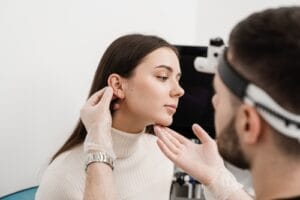 Have you ever wondered what it would be like not having prominent ears? Otoplasty can be a life-changing procedure for people who have spent their entire lives feeling self-conscious about their ears. In this blog, we will take you through everything there is to know about Otoplasty, from understanding what the procedure entails to the types of Otoplasty procedures available to prepare for the surgery and what happens during the recovery process. We will also touch upon the potential risks and benefits of undergoing Otoplasty. If you are considering an Otoplasty or simply curious about it, keep reading to learn more.
Have you ever wondered what it would be like not having prominent ears? Otoplasty can be a life-changing procedure for people who have spent their entire lives feeling self-conscious about their ears. In this blog, we will take you through everything there is to know about Otoplasty, from understanding what the procedure entails to the types of Otoplasty procedures available to prepare for the surgery and what happens during the recovery process. We will also touch upon the potential risks and benefits of undergoing Otoplasty. If you are considering an Otoplasty or simply curious about it, keep reading to learn more.
Types of Otoplasty Procedures
There are different types of otoplasty procedures to address various ear concerns. Ear pinning is the most common, focusing on correcting prominent ears. Ear reshaping can alter the size or shape of the ears for aesthetic purposes. Ear reconstruction is used for congenital conditions or trauma-related deformities. Otoplasty techniques vary based on the patient’s specific needs. Your plastic surgeon will recommend the appropriate procedure for you.
What Happens During the Otoplasty Surgery?
During otoplasty surgery, the surgeon makes incisions behind the ear to access and reshape the cartilage. Sutures are used to hold the new shape in place while it heals. The procedure takes about 1-2 hours and is usually performed under local anesthesia.
Post-surgery: What to Expect?
After otoplasty surgery, you can expect swelling and bruising around the ears. Pain medication may be prescribed for discomfort. Keep your head elevated and avoid sleeping on the operated ear. Follow post-operative instructions carefully for proper healing and results.
Potential Risks and Benefits of Otoplasty
While otoplasty surgery offers benefits such as improved self-confidence and aesthetic appearance, it also carries potential risks. These risks include infection, bleeding, scarring, and asymmetry. It is crucial to choose a qualified surgeon for the procedure. Recovery time can take several weeks, requiring adherence to post-operative care instructions. Otoplasty is generally safe, effective, and highly satisfying for patients.
Advantages of Undergoing Otoplasty
There are several advantages to undergoing otoplasty or cosmetic ear surgery. This procedure can help improve the appearance of misshapen ears, creating a more symmetrical and balanced look. Otoplasty is a safe and effective way to address large or small ears, and it can also correct defects such as microtia.
Possible Side Effects and Risks of Otoplasty
Like any plastic surgery procedure, otoplasty carries potential side effects and risks. Complications such as infection, bleeding, scarring, and asymmetry can occur. During the initial consultation, your surgeon will assess the complexity of the procedure and discuss the specific technique that suits your needs. Understanding the possible side effects and risks before deciding on cosmetic ear surgery is essential.
Recovery and Post-Operative Care after Otoplasty
After your otoplasty surgery, it is crucial to adhere to the post-operative care instructions provided by your surgeon. This will ensure optimal healing and minimize any potential complications. Take the prescribed medications as directed to manage pain and swelling. It is important to avoid strenuous physical activity during the initial recovery period to aid in the healing process. Additionally, keeping the dressing clean and dry will help prevent any infections. Lastly, attending all follow-up appointments is essential for monitoring and guidance throughout your recovery journey.
Essential Post-operative Care Measures
To ensure proper healing and optimal results after Otoplasty, it’s important to follow essential post-operative care measures. Avoid sleeping on your side or putting pressure on the ears. Wear a protective headband to maintain the new ear position. Gently cleanse the incision site with saline solution. Apply prescribed ointments to aid healing and reduce scarring. Protect the ears from direct sunlight and extreme temperatures.
Identifying Signs of Complications
Excessive or prolonged bleeding from the incision site could indicate complications after the otoplasty procedure. Increased redness, swelling, or warmth may indicate an infection. Any changes in the appearance of the ears should be reported to the surgeon. Persistent or worsening pain not relieved by medications should not be ignored. Unusual symptoms like numbness or tingling in the ear area should also be addressed.
Conclusion
In conclusion, otoplasty is a safe and effective procedure for correcting prominent ears. It can provide long-lasting results and boost your self-confidence. However, it is essential to understand the surgery’s risks and potential side effects. Following the post-operative care instructions and seeking medical attention if any complications arise is crucial for a smooth recovery process. Otoplasty offers numerous benefits, including improved appearance, enhanced symmetry, and a boost in self-esteem. If you are considering otoplasty, consult a qualified and experienced surgeon who can guide you through the process and ensure the best possible outcome. Contact us at Columbus Cosmetic today!
